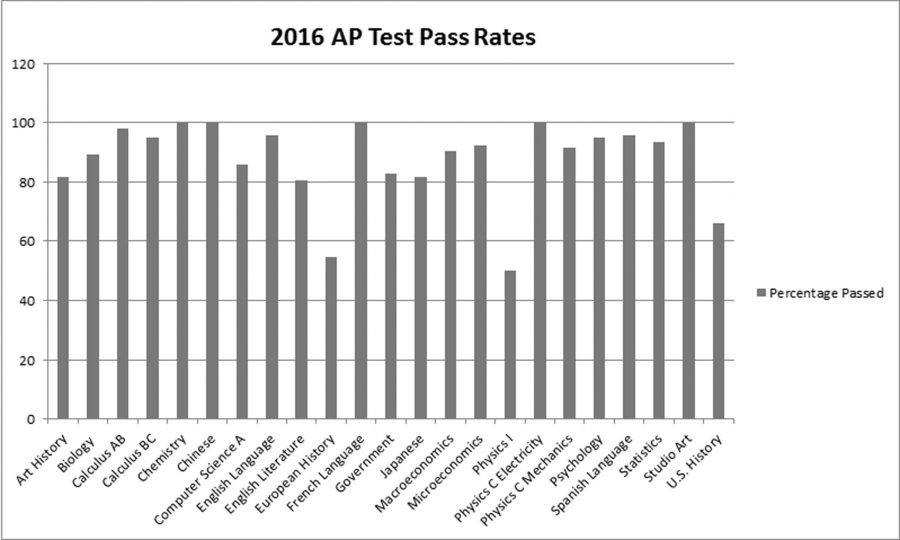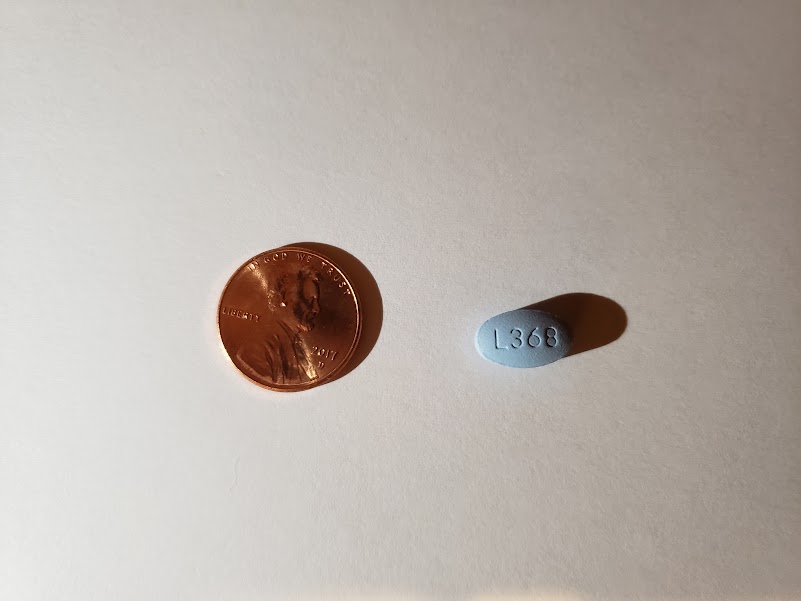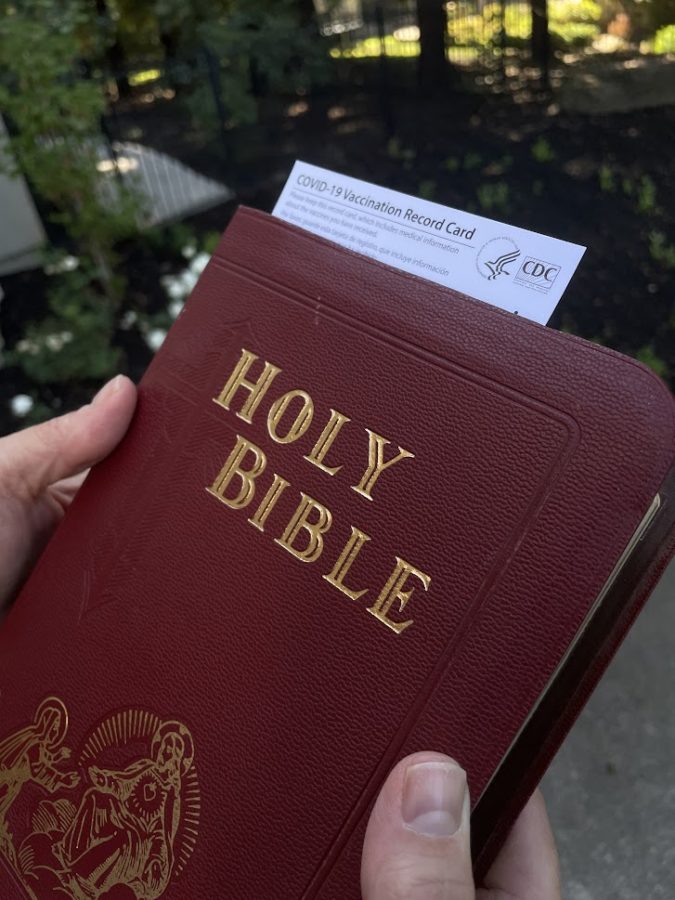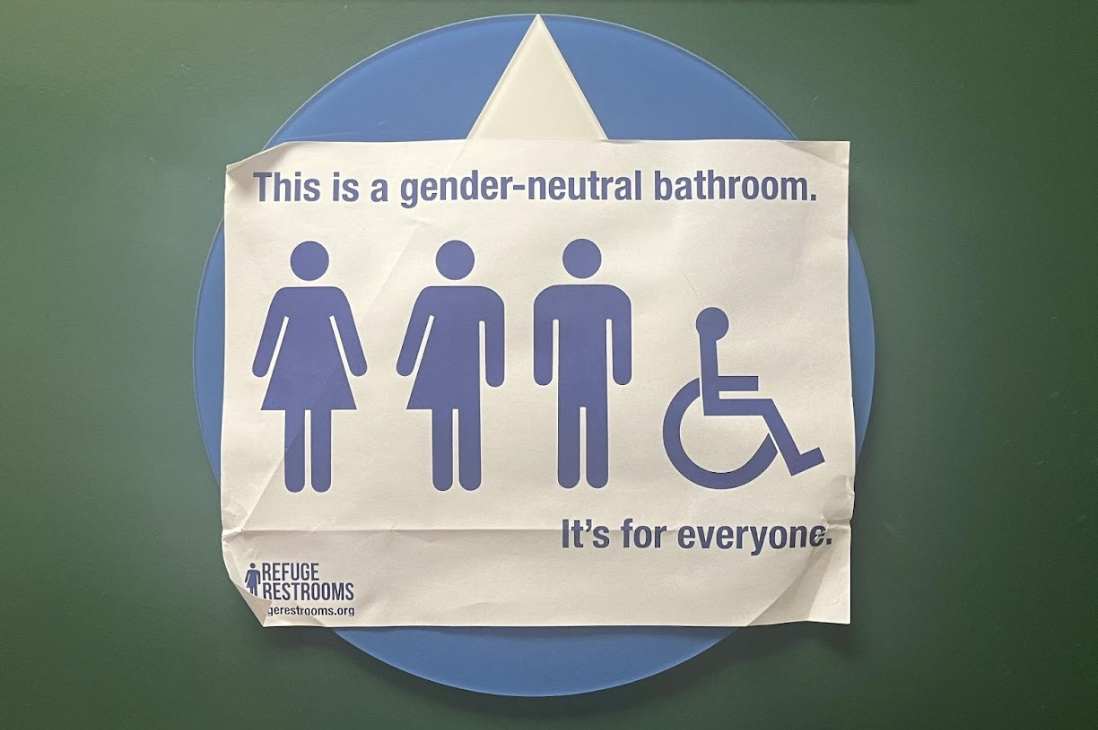In the 2015-2016 school year, College Board released two new Advanced Placement tests and Granite Bay High School offered a new AP science course – both had varying effects on students and teachers.
AP European History was impacted greatly by the change in test format. The pass rate for 2016 dropped a staggering 12.2 percent from the 66.8 percent pass rate in 2015.
“Nationwide, it was rough … and it’s as low as we’ve ever been here,” AP European History teacher Mike Valentine said. “(The scores) reflected the test. I think there were some growing pains there, from the way they’re scoring it and grading it to what the test was about.”
The students felt the impact of a brand new test just as much, if not more, than the teachers.
“The test was somewhat similar to the material we learned in class, but neither the teachers (nor) previous students knew the specificities of the material on the new test,” junior Jordan Riggs said. “Honestly, I didn’t feel very prepared.”
Many students believe the decline in pass rates was strictly because of the new test style.
“I think that the cause of the lower test scores compared to previous years can be attributed to the unknown style of the new test,” Riggs said, “not poor teaching.”
For now, teachers have to wait until the test is released to know what material to focus on in the future.
“The only thing we can go by is what we’re given from the College Board, but there is no new directives coming down,” Valentine said. “There is nothing saying ‘we will do it this way, this is how the test was’ – and it was nothing like we thought it was – the multiple choice section was completely off.”
Ultimately the suggestions teachers received from the College Board on how to structure the class were not very helpful and gave zero information about the new test.
AP Art History was the other course in which an entirely new test was administered in the spring of 2016.
“The emphasis for two decades was on breadth. Now the emphasis is on depth of knowledge,” AP Art History teacher Brad Cordell said.
This change in format was ultimately beneficial for Art History students as the pass rate for the test increased by 12.9 percent.
“The redesigned exam focused on 250 specific works. In the past, students weren’t given specific works ahead of time, so we would cover over a thousand images in a semester,” Cordell said. “The redesigned course is intended to provide students with a global view, whereas testing previously emphasized Western Art. The redesigned exam frees up students to master specific works in depth.”
Even though the pass rate increased, students felt the difficulty of the test.
“The test questions were so specific, going out of the test I didn’t feel like I was prepared enough,” senior Alexios Alexandrou Barcelo said.
Although he passed, Alexandrou Barcelo was challenged by some aspects of the test.
“I thought there was going to be a lot more stuff on specific time periods,” Alexandrou Barcelo said. “There were other (questions) on the test that we didn’t spend too much time on in class.”
Enjoying the class as a whole helped students find motivation while studying.
“I didn’t have to spend too much time outside of class,” Alexandrou Barcelo said. “I don’t think the workload was too bad either. I was interested in the material, so I didn’t feel bad if I had to study a little bit more.”
Having experienced the new exam style, Alexandrou Barcelo offers some advice to future test takers.
“Study groups really help. I think it’s more important to do all the work (Cordell) gives you for the test, but then compliment it with work outside of class.”
Although AP Physics 1 did not have a new test administered by the College Board, it was the first time the curriculum was taught on the GBHS campus. Certain students believed the lack of success on the AP test could be attributed to the teaching and intricacy of the questions.
“I really struggled throughout the year and did not find my instruction very assistive. I feel like the math prerequisite should have been adjusted to at least pre-calculus rather than Algebra 2 because that in itself created a disadvantage for a lot of the students,” junior Tanner Brasse said. “Too many times I would come in with a question for my teacher and leave knowing how to do a problem by plugging values into formulas, rather than actually understanding the concepts behind the topics.”
Large amounts of studying outside the classroom was still not able to completely help Brasse.
“I got a two,” he said, “and I (went to) over ten hours of review sessions.”
For other students, the AP Physics exam was challenging because they took the course in the fall, and didn’t take the AP test until five months later in the spring.
“I had the class in the fall and the test was in the spring, so I forgot most of (the material),” senior Michaela Warady said. “I (had) to reteach myself basically everything.”
Warady said the after-school reviews were helpful for her.
“I think (AP physics teacher Steve) Miller’s review sessions helped a lot,” Warady said.
Although Warady was one of the 13 GBHS students who passed the test, some students simply avoided taking the exam.
“I know a lot of students that struggled in the class that just didn’t take the test,” Warady said. “I’m pretty sure it’s just (because of) the new curriculum.”
Warady said the course was very demanding on the students.
“Even if we were able to understand the ideas,” Warady said, “the phrasing of the questions (on the exam) screwed up a lot of people.”
In order to assist his students, Miller offered extensive out-of-school teaching.
“Last spring I offered 34 hours of review session time,” Miller said. “Attending the review sessions is not a guarantee of success, but will provide the student with a far better chance to do well and pass the exam.”
Miller received disapproval from some students but used it to help better his future teaching.
“I understand and appreciate the criticisms,” Miller said. “We have great students and they are very knowledgeable. Changes will be made. I will focus on preparing students to be able to thoughtfully and accurately explain their knowledge in the manner expected by The College Board.”
The same question is being asked by AP Physics 1 teachers across the United States – how to better prepare students for the exam. Miller’s class had a pass rate that was 10 percent higher than the national average but he ensured “it will get better.”















